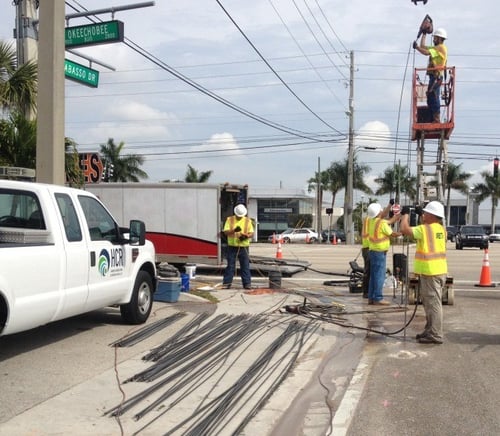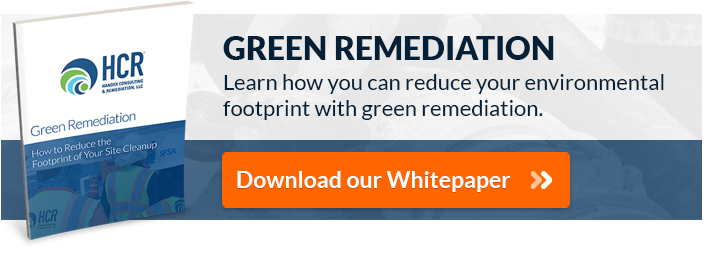
An injectable subsurface groundwater containment barrier can be a useful tool in managing contaminated groundwater issues on a project. Handex’s engineers have routinely innovated new uses for existing technology in alternative ways to save our clients both time and money, especially in support of critical infrastructure projects. The use of injectable subsurface groundwater containment barriers is one example of this type of innovation. It can very well provide an elegant solution to difficult problems with many additional positive side-effects.
If you are considering the use of injectable subsurface groundwater containment barriers for your project, here are a few things to keep in mind:
1. Understand the Purpose
It is important to understand the purpose of what you are trying to achieve with the use of a subsurface groundwater containment barrier. For example, the main purpose of this approach may be to minimize the amount of water that needs to be managed (eg. handling, treatment and disposal). This is most often helpful on construction sites to prevent the exacerbation of adjacent groundwater contaminant plumes and to prevent contamination from flowing into your work zone. To be successful, however, you will need to have a more specific idea of what your goals are. Here are a few parameters you’ll need to understand for your project:
- The depth and duration of construction activities
- The horizontal and vertical extent of the adjacent groundwater contaminant plumes
- The type(s) of groundwater contaminants and their chemical properties
- The hydrogeology and geochemistry of the area
- Subsurface utilities and other possible subsurface obstructions/anomalies
These are all questions that will factor into the overall planning, design and environmental management of the project. You’ll need to know exactly what your desired purpose is and develop the parameters related to a successful end result.
2. Know the Conditions
Site conditions will have a big effect on how and if you use injectable subsurface groundwater barriers. One of the most important factors to consider is the soil type. Different soil compositions will react differently to the flow of chemicals, the mixing of the matrix and resultant expansion and solidification of what you are injecting into the ground. Soil properties and subsurface architecture will affect the geometry and structural integrity of the barrier.
Regarding the subsurface architecture, if there are numerous pipes or utility lines underground, this could make the project more difficult. You will either have to remove the obstructions if they no longer serve a purpose, or engineer a way to work around them.
3. Actively Involve All Stakeholders
In many cases, installing an injectable subsurface groundwater barrier is only one aspect of a larger project. There will probably be other parties involved such as project administrators, general contractors, construction engineers, drainage contractors, dewatering subcontractors, utility owners and others. In such cases, you will need to communicate with the other stakeholders regarding the design, construction and overall purpose of the subsurface groundwater barrier. They will need to know what has been installed, where it has been installed, how it has been installed and why it was installed, so they can decide if it will affect their operations.
4. Value Engineering, Value Added
Injectable subsurface groundwater barriers can be costly due to the proprietary nature of the chemicals that are involved, and the specific nature of the process in which they must be injected. However, injectable subsurface groundwater barriers also have the potential to save significant time and money on the backend. For example, other types of barriers, such as sheet piles, may need to be installed AND removed. Not only does this take more time, require a larger operational footprint and require additional mobilizations, it also requires more fuel to be used. This may require additional administrative and surrounding community impact concerns, such as time of day restrictions and noise permits. Injectable groundwater containment barriers may have the potential to save you money on engineering requirements, equipment rental, manpower and fuel while also helping to avoid costly delay claims.
Once in the ground, an injectable subsurface groundwater containment barrier becomes an inert material that can be left in place and is excavatable. This can be a big advantage over conventional containment/groundwater barrier technology and strategies.
Using Injectable Subsurface Groundwater Containment Barriers
In addition to being easily implemented (minimal disruption) and also with the potential of saving time and money, injectable groundwater containment barriers are also much cleaner and can be better for the environment than more conventional techniques and standard practices. Contact Handex today to learn more about how injectable groundwater containment barriers could benefit your project.



